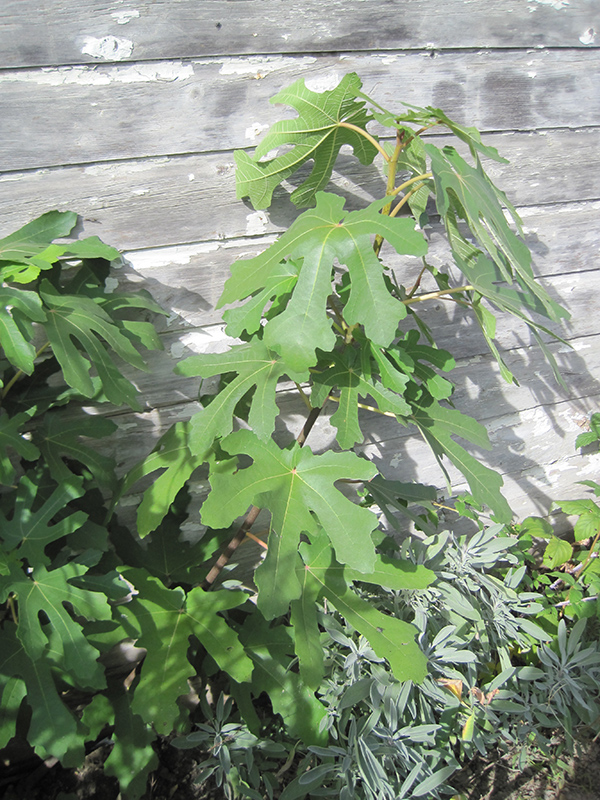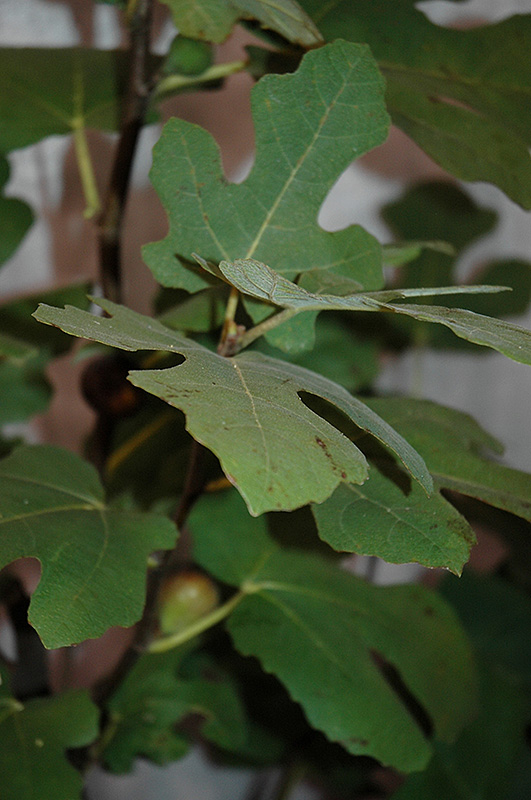Plant Finder
Chicago Hardy Fig
Ficus carica 'Chicago Hardy'
Height: 20 feet
Spread: 20 feet
Sunlight:
![]()
![]()
Hardiness Zone: 6
Other Names: Bensonhurst Purple Fig
Description:
Noted for having unusually good winter hardiness, this variety can be maintained as a large shrub in cooler areas with some winter protection; sweet purplish-red fruit in fall, in clusters among interesting lobed leaves; also a great container plant
Edible Qualities
Chicago Hardy Fig is a small tree that is commonly grown for its edible qualities, although it does have ornamental merits as well. It produces plum purple fruit (technically 'pomes') which are usually ready for picking from early to mid fall. The fruits have a sweet taste.
The fruit are most often used in the following ways:
- Fresh Eating
- Cooking
- Preserves
Features & Attributes
Chicago Hardy Fig has attractive dark green foliage with chartreuse veins on a tree with a round habit of growth. The lobed leaves are highly ornamental but do not develop any appreciable fall color. The fruits are showy plum purple pomes carried in abundance in mid fall. The fruit can be messy if allowed to drop on the lawn or walkways, and may require occasional clean-up.
This is a deciduous tree with a more or less rounded form. Its average texture blends into the landscape, but can be balanced by one or two finer or coarser trees or shrubs for an effective composition. This plant will require occasional maintenance and upkeep, and is best pruned in late winter once the threat of extreme cold has passed. It is a good choice for attracting birds to your yard, but is not particularly attractive to deer who tend to leave it alone in favor of tastier treats. It has no significant negative characteristics.
Aside from its primary use as an edible, Chicago Hardy Fig is sutiable for the following landscape applications;
- Accent
- Shade
- Hedges/Screening
- General Garden Use
- Container Planting
Planting & Growing
Chicago Hardy Fig will grow to be about 20 feet tall at maturity, with a spread of 20 feet. It has a low canopy with a typical clearance of 1 foot from the ground, and is suitable for planting under power lines. It grows at a medium rate, and under ideal conditions can be expected to live for 50 years or more.
This tree is quite ornamental as well as edible, and is as much at home in a landscape or flower garden as it is in a designated edibles garden. It does best in full sun to partial shade. It does best in average to evenly moist conditions, but will not tolerate standing water. It is not particular as to soil type or pH, and is able to handle environmental salt. It is highly tolerant of urban pollution and will even thrive in inner city environments. Consider applying a thick mulch around the root zone in winter to protect it in exposed locations or colder microclimates. This is a selected variety of a species not originally from North America.
Chicago Hardy Fig is a good choice for the edible garden, but it is also well-suited for use in outdoor pots and containers. Because of its height, it is often used as a 'thriller' in the 'spiller-thriller-filler' container combination; plant it near the center of the pot, surrounded by smaller plants and those that spill over the edges. It is even sizeable enough that it can be grown alone in a suitable container. Note that when grown in a container, it may not perform exactly as indicated on the tag - this is to be expected. Also note that when growing plants in outdoor containers and baskets, they may require more frequent waterings than they would in the yard or garden.




